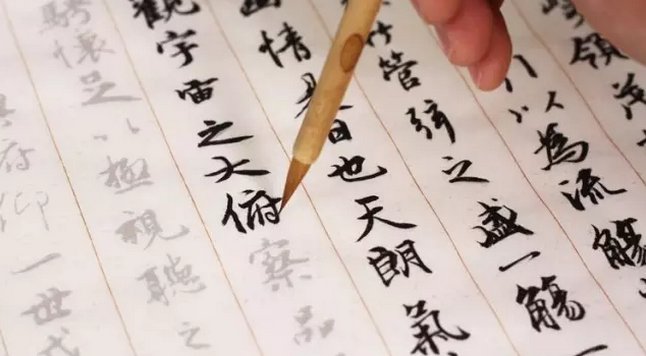Why is it so difficult to write Chinese characters well? It’s because there are so many characters that there’s no pattern, and writers have different habits, so there’s no standard. In the past, the handwriting stickers we commonly used for practicing calligraphy could only trace red or copy, and the strokes were written randomly. They lacked inertial guidance and positioning for the "prioritization, contraction and gathering" of strokes. Therefore, as soon as the calligraphy stickers were taken away from their hands, many people's handwriting was immediately returned to their original shape. . So, how can we practice writing Chinese characters well? Is it possible to write well without a copybook?

Calligraphy methods and techniques
1. Correct writing posture is very important. The head should be straight, not tilted or tilted, the body should be straight, and the body should not be lying on its side or lying down, the feet should be flat, and the feet should be flat on the ground. Do not cross your legs to support your feet. The eyes should be one foot away from the paper. They should not be too close or too far away. Nowadays, many people are short-sighted and are used to being very close to the paper. This habit is not good. The distance between the hand and the tip of the pen is one inch. This is the technique for grasping the pen. The gripper is usually about the first third of the entire pen. The chest should not be leaning on the table, nor should it be too far away from the table. A punch's distance is appropriate.
2. Have confidence that you can write beautiful handwriting! Then you need to cultivate the aesthetics of calligraphy and become interested in calligraphy. Finally, of course, the most important thing is to find a good copybook with a font that you admire very much, and copy it. At the beginning, you need to copy it on a more transparent paper. Trace on the copybook. After practicing for a period of time, if you think your writing is good, you will take away the paper and copy on the copybook. After a while, you will put away the copybook and write by yourself. After writing, compare it with the copybook to see what the difference is. Until it is exactly the same as the copybook. At the end, it is the stage of self-innovation: because at this time, what you write is still XX style. You can modify some strokes, glyph structures, etc. according to your own ideas, so that you can have a font with your own unique style! If you have the conditions and are interested, you can also practice brush calligraphy, because this is very beneficial to practicing hard-pen calligraphy. The last thing to note is that practicing calligraphy is a long-term and subtle process. Don't expect to impress people in a short period of time. You must practice every day and persevere.
3. Also combine copying and copying: Copying is the most basic method of learning calligraphy. Not only do you need to copy when you are new to calligraphy, but you also need to copy after you have a certain foundation. Learning regular script requires copying, while learning seal script, official script, running script, and cursive script still requires copying. A calligrapher spends his life in copying, learning in copying, thinking in copying, and creating in copying. Copying is to cover the copybook with thin paper, and then the pen follows the shadow and writes according to the revealed handwriting. It is also called "imitation" or rubbing. There is another method of copying called "drawing red", which is to fill in the words printed with double hooks and red lines.
4. How to copy: first draw red. That is, select clear and complete characters from a book of calligraphy, cover them with transparent and ink-proof thin paper, such as typing paper, glossy paper, tracing paper, etc., and follow the outline of the characters with extremely thin paper. The lines are hooked into hollow characters, which is called "double hook". Then use the hooked words as a tracing book, fill it in with red ink, then with blue ink, and finally with ink. Writing in this way can not only deepen your memory, but also save paper. When copying the calligraphy, you should pay attention to the brush strokes and avoid losing shape. You should pay close attention to the ins and outs of the strokes and figure out its brushwork and structure. The copying should have the meaning of "writing". Write the strokes one by one, full and precise, and do not follow the gourd and the gourd to fill in and smear.
5. When writing, you must determine the relationship between primary and secondary: the stippling of words is divided into primary and secondary. Although there are only a few main strokes in a word, once the main strokes are written, most of the words will be written. On the other hand, the main strokes of characters often extend outwards, while the other secondary strokes often draw inward. Once the priority is determined, it becomes clear which stipples should be stretched and which stipples should be contracted. For this reason, analyzing and determining the main author is an important step.








